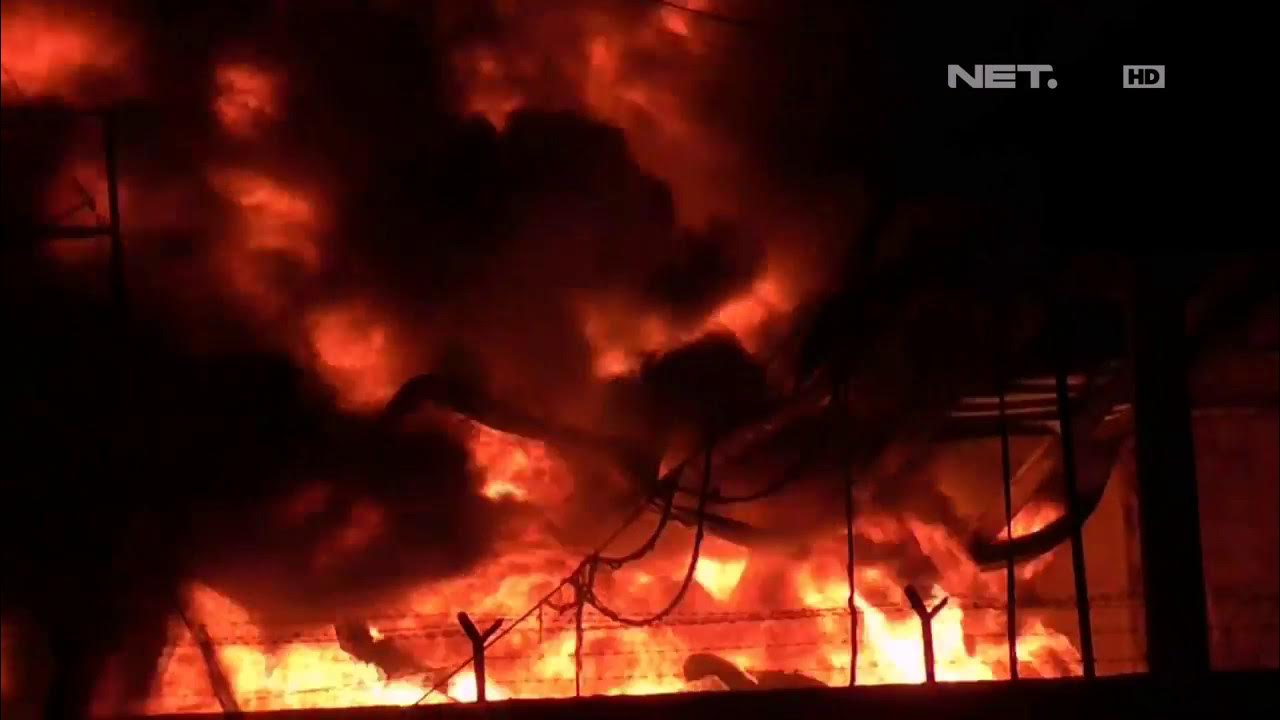Live Rescue: Firefighters Respond to Explosive House Fire (Season 2) | A&E
Summary
TLDRA fire breaks out in a house due to a gasoline spill near a generator, causing a garage fire and posing risks of explosions from an acetylene or propane tank. Responders quickly assess the situation, managing the fire and handling safety concerns related to hazardous materials. Despite initial challenges in extinguishing the flames, the team successfully controls the fire, avoiding further escalation. While the incident could have been much more dangerous, quick thinking and proper safety protocols helped prevent a more catastrophic outcome, and the all-clear was given once the situation was under control.
Takeaways
- 😀 A house caught on fire due to a gas spill, sparked by a generator in the garage.
- 🔥 The fire quickly escalated, and a nearby house was in immediate danger due to the proximity of the flames.
- 🚨 Firefighters responded rapidly, coordinating their efforts to control the fire and ensure the safety of nearby structures.
- ⚡ An explosion was suspected in the garage, raising the risk for further damage.
- 🛑 Firefighters avoided entering the garage initially due to the potential hazard of an explosive situation.
- 🚒 The team worked to replace equipment (engine 202) when air supplies ran low for the firefighters.
- 💥 A loud explosion occurred in the garage, leading to heightened caution among the team.
- 🧯 The crew faced challenges in extinguishing the fire due to a flare-up from an acetylene tank in the garage.
- 🏚 The situation could have been much more dangerous if a propane tank had been involved instead of the acetylene tank.
- 💨 Despite the danger, the fire was eventually brought under control, and the crew successfully avoided further harm.
- 💪 The team emphasized the importance of preparedness, positioning, and a bit of luck to ensure safety during such high-risk operations.
Q & A
What caused the fire in the incident?
-The fire was caused when RB spilled gas, which sparked a fire. The generator, located in the garage, is believed to have started the fire when the gas was spilled.
What specific danger did the responders encounter during the fire?
-The responders encountered a potential hazard when an acetylene tank in the garage flared up, which could have caused a more dangerous explosion. At one point, the tank let loose, causing a scare, but it was not a propane tank, which would have been more destructive.
What did the team do to manage the fire safely?
-The team took careful precautions, including not making an entry into the garage immediately due to the potential explosion risk. They focused on controlling the situation and working with other crew members to manage electrical hazards and air supply for the responders.
What role did the chain of command play in the response?
-The chain of command was crucial in coordinating the response. Command was established to the west of the house, and the units were directed to handle various tasks, including managing the fire and ensuring the safety of personnel.
How did the responders ensure the safety of everyone involved?
-The responders maintained clear communication, coordinated efforts to handle the hazardous materials safely, and ensured that crews were ready to replace those running low on air. They also had a quick knockdown of the fire to prevent it from worsening.
What was the state of the house fire when the responders arrived?
-The fire was active and spreading, with flames close to RB's house. The responders initially faced the challenge of a fire that might have been in the garage due to the gas spill, and had to carefully assess the situation.
How did the responders deal with the explosion risk?
-The responders identified the potential for explosions due to the acetylene tank and propane tank in the garage. They made sure to stay clear of direct entry into the garage while focusing on containing the situation outside and managing electrical hazards.
What was the result of the fire incident?
-The fire was quickly knocked down, but it continued to burn due to an acetylene tank flare-up. Fortunately, the situation did not escalate into a full-blown explosion, and no one was injured, thanks to careful handling and a bit of luck.
What was the condition of the responders during the incident?
-The responders appeared to be working under pressure but were well-equipped to handle the situation. One responder reported a hot object landing on their neck, but it was quickly dealt with, and there were no significant injuries.
What was the critical factor that prevented the situation from becoming worse?
-The critical factor was that the acetylene tank, although dangerous, was not a propane tank. Propane could have caused a more devastating explosion, potentially destroying the wall and causing further harm.
Outlines

This section is available to paid users only. Please upgrade to access this part.
Upgrade NowMindmap

This section is available to paid users only. Please upgrade to access this part.
Upgrade NowKeywords

This section is available to paid users only. Please upgrade to access this part.
Upgrade NowHighlights

This section is available to paid users only. Please upgrade to access this part.
Upgrade NowTranscripts

This section is available to paid users only. Please upgrade to access this part.
Upgrade NowBrowse More Related Video

911 Fire Call

Kebakaran Pabrik Cat Menghanguskan Bangunan Dalam Waktu Singkat - NET5

BREAKING NEWS - 17 Unit Pemadam Dikerahkan dalam Kebakaran Kemayoran

Sempat Terdengar Ledakan, Rumah Penyimpanan Sparepart Motor di Cengkareng Terbakar | OneNews Update

15 pamilya sa Brgy. Bangkal, Makati City, nasunugan | 24 Oras Weekend

Kebakaran di Bromo, Kali Ini di Kawasan Gunung Batok
5.0 / 5 (0 votes)